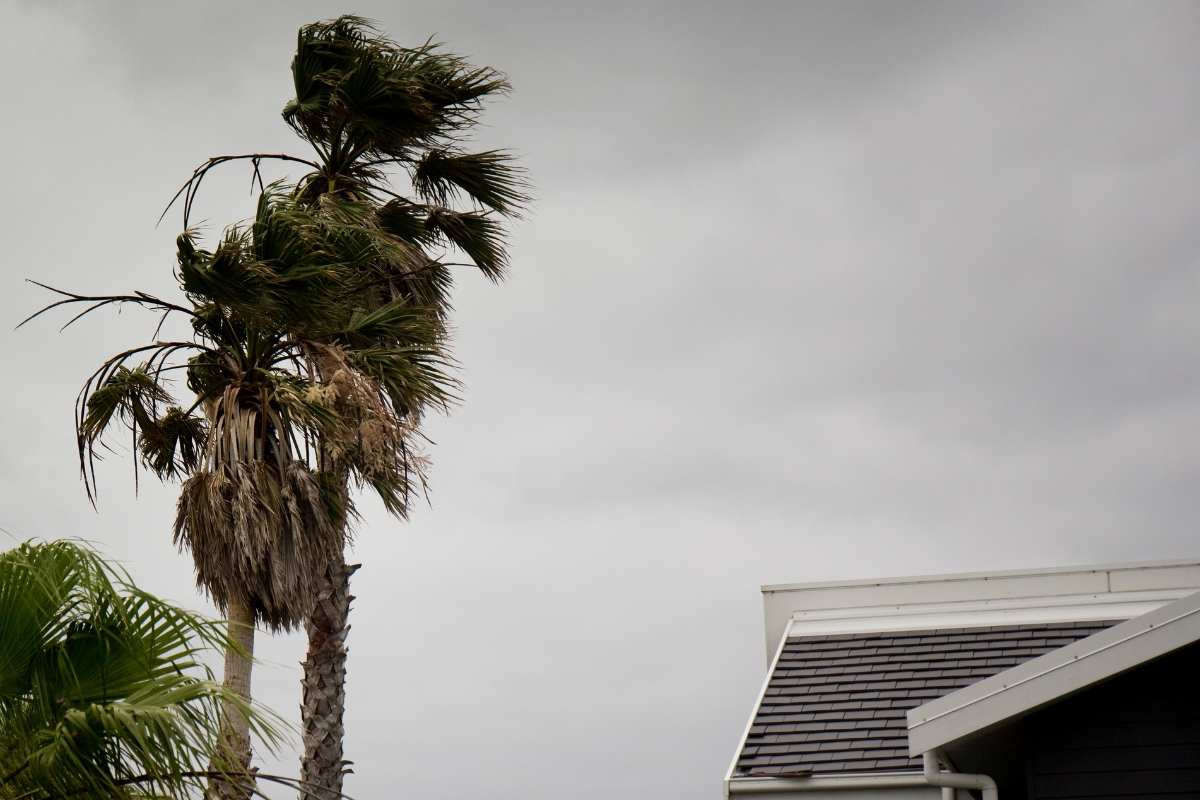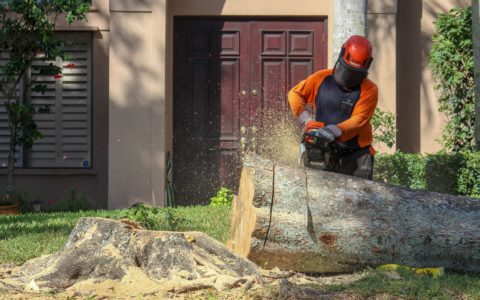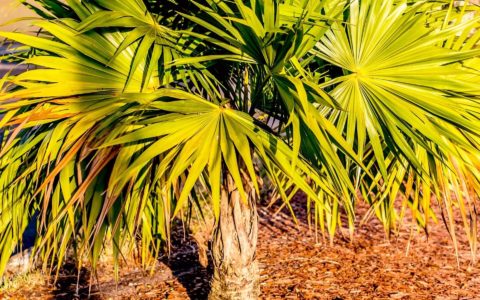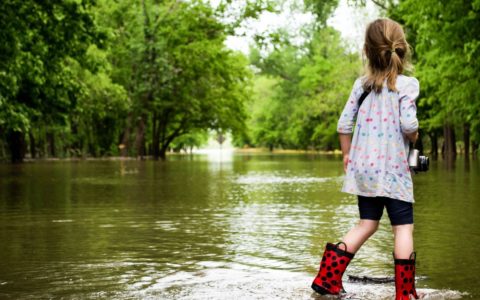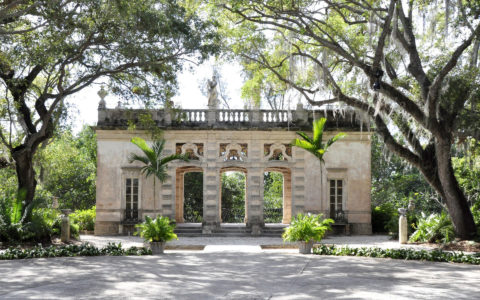South Florida didn’t take a direct hit this hurricane season, but that doesn’t mean storm damage isn’t still lingering across the region. Many properties are still dealing with the effects of last year’s tornado outbreak during Hurricane Milton, summer tropical-storm winds, or the powerful cold-front gusts that sweep through Broward County every winter. Branches have been cleared, immediate hazards have been handled, and the urgency has faded – but tree recovery after storms is only just beginning.
Key Takeaways
- Palms and hardwoods follow completely different recovery timelines: palms need 6+ months just to show survival signs while hardwoods begin recovery within weeks, but both require 2-3 years of phased restoration with multiple visits.
- Phased restoration over 2-3 years costs less than intensive one-time work while producing better structural outcomes and avoiding emergency pricing premiums.
- Regularly pruned trees have significantly fewer failures than unpruned trees, making annual maintenance an important piece of measurable storm protection.
- Wait 2-6 months before first restoration pruning to allow stressed trees to reveal what’s truly dead versus dormant, enabling more precise and effective work.
The Four Phases of Storm Tree Recovery in South Florida
Storm recovery follows four distinct phases from emergency crisis through professional planning, active restoration, and ultimately prevention-focused maintenance.

A detailed look at internal wood failure – evidence that hidden cracks and weak unions often split apart during severe storms and need expert assessment before restoration begins.
Phase 1: Emergency Crisis Mode (Immediately After the Event)
Focus only on immediate safety during this critical first phase:
- Remove fallen trees blocking driveways or threatening structures
- Avoid removing damaged trees you might save later
- Expect premium emergency pricing (50-100% above normal rates)
- Resist making permanent decisions in panic mode
Trees that look devastated often recover beautifully with proper care.
Phase 2: Professional Assessment & Restoration Planning (Once Immediate Hazards Are Cleared)
This phase shifts from reactive crisis to strategic planning for long-term recovery.
An ISA Certified Arborist evaluates your trees to determine the best restoration approach. They assess structural integrity, identify hazard risks, determine which branches show recovery potential, and distinguish what’s truly dead versus temporarily dormant. Based on this evaluation, they develop a restoration timeline typically starting 2-6 months post-storm.
The waiting period between evaluation and first pruning serves a critical purpose: stressed trees shut down temporarily to conserve energy, and this dormancy can look exactly like death. Waiting allows trees to reveal their true condition, preventing premature removal of branches that would have recovered.
Phase 3: Active Tree Restoration (Over the First 1-3 Years)
Complete structural recovery requires multiple visits spaced 12+ months apart, with each visit building progressively on previous work.
The first restoration visit (year 1) focus on removing dead wood and stabilizing structure – not aesthetics. Less is more during this visit since aggressive pruning compounds stress on recovering trees.
In the follow-up visits (years 2-3), your arborist monitors recovery growth patterns, structural stability improvements, and emerging issues. Each visit builds toward full recovery:
- Visit 2 (Year 1): Additional dead wood removal, minor structural corrections.
- Visit 3 (Year 2): Structural refinement as tree strengthens, aesthetic improvements.
- Visit 4 if needed (Year 3): Final structural fine-tuning, aesthetic pruning.
Restoration is considered complete when the tree demonstrates stable structure, consistent growth, and effective wound compartmentalization. For hardwoods, this typically takes 2-3 years. For palms, expect 3-4 years depending on damage severity.
Phase 4: Prevention Mode and Ongoing Maintenance (Year-Round After Recovery Begins)
Once restoration work wraps up, annual maintenance becomes your best protection against future storm damage.
Research following Hurricane Andrew back in the mid 1990s showed regularly pruned trees had significantly fewer failures compared to neglected specimens. This proven protection comes with practical advantages that extend beyond storm season, including:
- Annual care costs substantially less than emergency response
- Proactive investment prevents future crisis spending
- Documented care history supports insurance claims
And just like that, you’ve transformed your approach from reactive to proactive tree care.
How Long Does It Take for a Tree to Recover from Storm Damage?
Storm damage recovery takes 6+ months minimum for palms and 2-3 years for hardwoods, with dramatically different care requirements for each.
What Does the Storm Recovery Look Like for Palm Trees?
Palms trees recover very differently from hardwoods because of their unique biology. Each palm has only one growing part – the bud or “heart” at the crown. If that bud survives, the palm can recover. If it’s damaged, the entire tree fails.
That’s why recovery feels so uncertain. You usually can’t confirm survival until a new spear leaf emerges. This can take six months or longer, and full canopy recovery may take several years depending on the species and severity of damage.
Different palms respond to storms in noticeably different ways:
- Sabal Palms (native): Extremely resilient with the highest survival rate. They often push out new growth quickly after losing their canopy.
- Royal Palms: Commonly shed most fronds but typically recover if the crown bud remains intact.
- Queen and Washington Palms: More vulnerable to crown damage, slower to rebound, and more likely to decline after severe defoliation.
What Does the Storm Recovery Process Look Like for Hardwood Trees?
Hardwood trees often appear to “bounce back” more quickly than palms, but their recovery is a long-term game. While leaves may return within weeks, true structural recovery takes 2–3 years and requires staged professional pruning to restore strength and stability.
Why Hardwoods Recover Differently
Hardwoods have a major advantage over palms – multiple growth points throughout the canopy. This gives them the ability to push out new buds even after significant defoliation. After severe storm stress, many hardwoods leaf out again within weeks as the tree redirects stored energy into new foliage.
However, leaf regrowth isn’t the finish line. The tree still needs:
- structural corrections
- deadwood removal
- staged pruning
- long-term monitoring
These steps spread over several years ensure the canopy regains balance and the trunk and limbs compartmentalize storm wounds properly.
H2: How Storm Restoration Leads to Long-Term Tree Care in South Florida
Most homeowners view storm restoration as finite, but the smartest approach treats it as a transition into ongoing preventive maintenance.
The connection between regular care and storm survival isn’t just theory; it’s backed by decades of research data that found survival rates of 73% for pruned trees compared to just 47% for unpruned trees, proving professionally maintained trees handle hurricanes far better than neglected ones.
Why Regular Tree Maintenance Prevents Storm Damage
Regular pruning and professional maintenance ensures your trees are healthy and well-cared for, no matter the weather conditions. Regular tree care services help:
- Maintain structural integrity through proper pruning cycles
- Enable early problem detection before failures occur
- Provide species-appropriate care extending lifespan
- Deliver research-proven hurricane resilience
Essentially, for South Florida homeowners, regular maintenance functions as storm insurance backed by measurable survival data.
What South Florida Annual Tree Maintenance Programs Include
Annual tree maintenance programs in South Florida go beyond routine pruning; they’re designed to strengthen trees before storm season, preserve long-term health, and ensure a rapid, organized response when severe weather strikes.
Pre-storm season preparation:
- May-June inspections before hurricane season
- Identify and address structural weaknesses proactively
- Remove dead wood and weak branches
- Document tree conditions for insurance
Ongoing structural care:
- Proactive pruning rotation on 3-5 year cycles
- Species-specific care plans for South Florida
- Regular health and vigor monitoring
- Early disease and pest detection
Emergency response advantages:
- Priority service during storms for existing clients
- Established relationship with arborists who know your trees
- Documented care history for insurance claims
Frequently Asked Questions About Storm Damage Restoration in South Florida
Should I fertilize my trees immediately after storm damage?
No, avoid fertilizing damaged trees until they show signs of recovery growth. Fertilizer stimulates new growth that stressed trees can’t support. Wait until new leaves or fronds emerge naturally before resuming normal fertilization.
Do I need permits for storm damage restoration in South Florida?
Most restoration pruning doesn’t require permits, but regulations vary by municipality in Broward and Palm Beach Counties. Your tree service company should know local requirements and handle any necessary permits.
Will my tree ever look the same after storm restoration?
Trees restored properly over 2-3 years typically regain normal appearance and structure eventually. However, severely damaged trees may have permanent aesthetic changes. Focus on structural integrity and health first; appearance improves gradually over the restoration period.
Ready to Start Your Storm Tree Restoration in South Florida? Call Sherlock Tree Today!
Storm tree restoration is a multi-year journey requiring patience, species-specific knowledge, and proper timing. However, the restoration phase also presents a strategic opportunity: transitioning to proactive annual maintenance to protect your landscape during future storms.
With 50+ years of South Florida experience, Sherlock Tree’s ISA Certified Arborists understand native species recovery patterns intimately and know what steps to take to begin your tree on the path to recovery. Schedule a restoration assessment by calling 954-788-4000 or request an estimate online today.
Call Sherlock for quality tree services
Whether you're looking for specific tree care services, such as palm trimming, tree removal, or disease treatments, or would like one of our Arborists to examine your trees to identify any issues and recommend options, we're always here for you! Just give us a call at 954-788-4000 to set up an appointment.
- « Previous
- 1
- 2
- 3
SEE MORE ARTICLES
Looking for more?
We've got you covered with a monthly newsletter full of tips, resources, updates, how-to's, and other helpful information about trees and landscapes in South Florida!

